Since embarking on the business of car production, SUBARU has above all else focused on development of “safety technology” to provide protection against collisions. SUBARU cars incorporate numerous technologies designed to protect passengers, as well as the lives of pedestrians, in the event of a collision. Designing every aspect of the car with the aim of guaranteeing utmost safety is a collision safety concept that is unique to SUBARU and evidenced with features such as the “Ring-Shaped Reinforcement Frames body” to protect against collisions, or the engine layout that protects passengers from shocks in the event of a crash.





Protection against Collisions.
Ring-Shaped Reinforcement Frames body
The heart of all-around safety
The design of this body features a ring structure connecting the left and right A, B and C pillars via the roof and floor, combined with strengthened side rails and side sills linking the side of the body to create a cage that envelopes the central cabin. This design absorbs shocks efficiently from any direction in the event of an accident, providing the cabin with solid protection.
Frontal/Rear-End Collisions
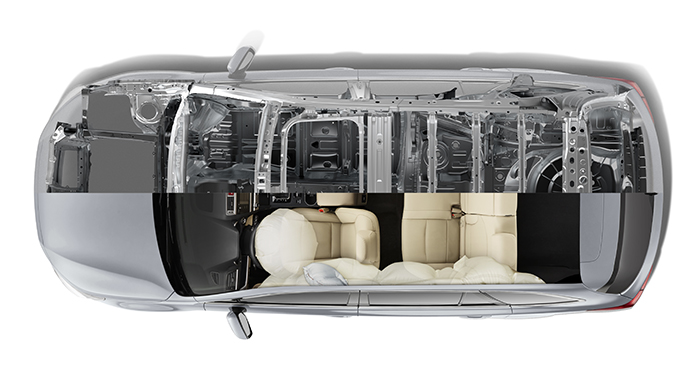
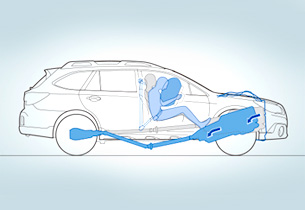
Submarining to prevent injury to passengers
Subaru cars have traditionally been powered by the Horizontally-Opposed SUBARU BOXER Engine. With an inherently low centre of gravity, the engine allows the transmission and other components in the drivetrain to be positioned in a straight, symmetrical line. This design allows the engine to “submarine” – or slide – under the floor during a frontal collision, and has been proven to be much safer than other engines, where the transmission and other drivetrain components are often pushed into the cabin during a collision. Related: The SUBARU BOXER Engine
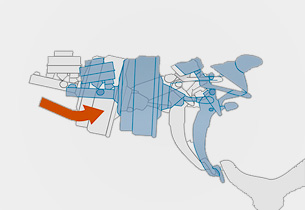
Eliminating injury to lower legs
If the car is involved in frontal collision, the car’s pedals often move backward, causing injuries to the driver’s leg. All Subaru cars employ auto-retracting pedals to minimise this type of injury. Brake pedals are retracted with the use of a catch and shock absorbing clutch pedals (MT models) limit changes in pedal position. Footrests (AT models) also use shock absorbing material to reduce injury to the driver’s feet.
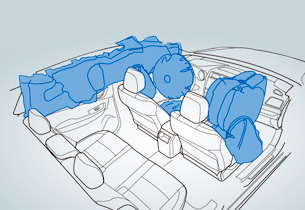
Instantly inflatable cushions
The driver’s seat and passenger’s seat SRS airbags work in tandem with seatbelts to protect passengers. These are folded into a compact size and stored within the steering wheel and dashboard, and inflate instantaneously to form airbags during a collision, providing added protection for the passengers.
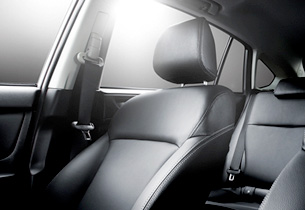
Front passenger seat restraints for unexpected accidents
The front seat seatbelts of Subaru cars have a number of features for added safety. The pretensioner tightens the seatbelt instantaneously during a collision, holding passengers more firmly in their seats. The load limiter maintains tension in the seatbelt, reducing injury to the passenger’s chest. And the seatbelt adjuster changes the position of the shoulder strap to suit different body sizes.
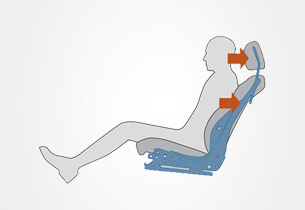
Reducing passenger whiplash and injury
Seats play an extremely important role in protecting passengers during a rear-end collision. Standard front seats in Subaru cars incorporate mechanisms to reduce these shocks in three ways: (1) Active headrests to hold the head firmly. (2) Absorb shocks to the head using energy absorbing headrests with a dual layer internal structure, thus minimising neck whiplash. (3) The entire seatback absorbs the shock that throws passengers backwards, minimising the shock transmitted to passengers.Shock absorbing materials have also been used for the ceiling and other cabin surfaces to reduce the shock transferred to the heads of passengers during a collision.
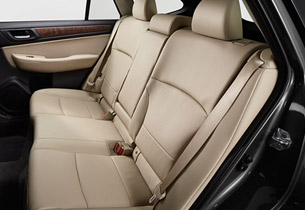
Three-point seatbelts in all seats for better safety
All rear seats in Subaru cars use three-point seatbelts to firmly hold the waist and chest area of passengers. All retractors feature a child seat (ALR) mechanism.
Side/Offset Collision, Roll-over
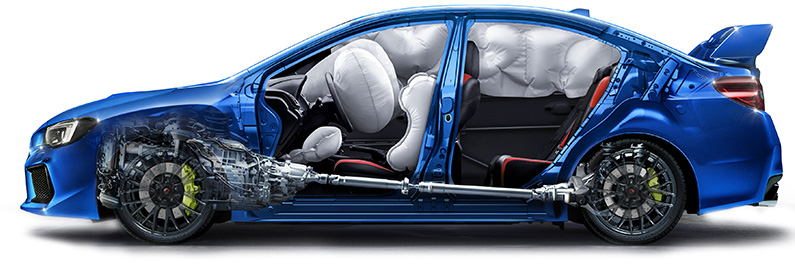
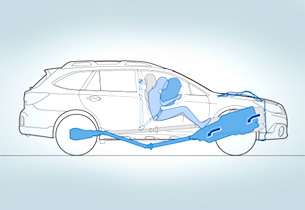
Submarining to prevent injury to passengers
Subaru cars have traditionally been powered by the Horizontally-Opposed SUBARU BOXER Engine. With an inherently low centre of gravity, the engine allows the transmission and other components in the drivetrain to be positioned in a straight, symmetrical line. This design allows the engine to “submarine” – or slide – under the floor during a frontal collision, and has been proven to be much safer than other engines, where the transmission and other drivetrain components are often pushed into the cabin during a collision. Related: The SUBARU BOXER Engine
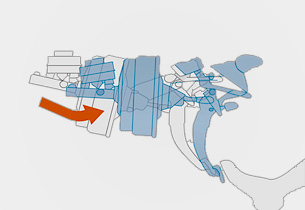
Eliminating injury to lower legs
If the car is involved in frontal collision, the car’s pedals often move backward, causing injuries to the driver’s leg. All Subaru cars employ auto-retracting pedals to minimise this type of injury. Brake pedals are retracted with the use of a catch and shock absorbing clutch pedals (MT models) limit changes in pedal position. Footrests (AT models) also use shock absorbing material to reduce injury to the driver’s feet.
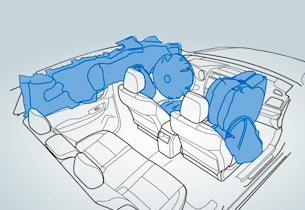
Instantly inflatable cushions
The driver’s seat and passenger’s seat SRS airbags work in tandem with seatbelts to protect passengers. These are folded into a compact size and stored within the steering wheel and dashboard, and inflate instantaneously to form airbags during a collision, providing added protection for the passengers.
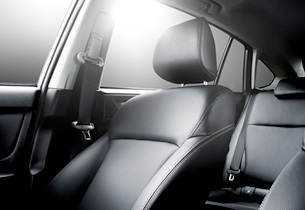
Front passenger seat restraints for unexpected accidents
The front seat seatbelts of Subaru cars have a number of features for added safety. The pretensioner tightens the seatbelt instantaneously during a collision, holding passengers more firmly in their seats. The load limiter maintains tension in the seatbelt, reducing injury to the passenger’s chest. And the seatbelt adjuster changes the position of the shoulder strap to suit different body sizes.
SUBARUs have rigid side door beams installed within doors on either side of the car to protect passengers during a side collision. The high level of rigidity afforded by the Ring-Shaped Reinforcement Frames body protects the entire cabin space in the event of a collision or roll-over. The addition of front side SRS airbags/curtain SRS airbags and use of shock absorbing materials throughout the interior help to protect the head and body of passengers in a cabin entirely designed to reduce collision shocks.
Pedestrian Protection and Compatibility
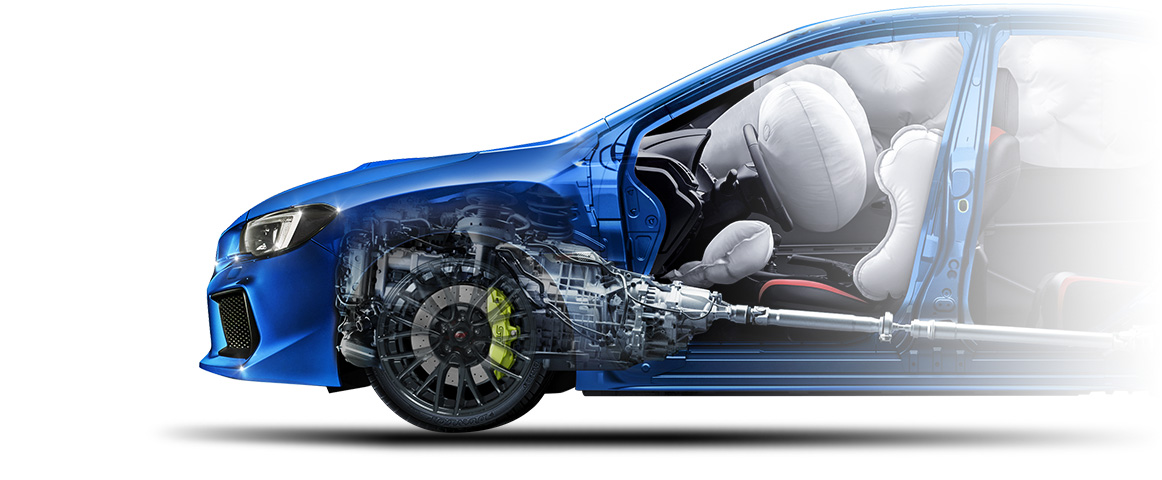
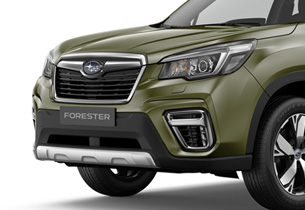
Reduced injury to pedestrian legs
A shock absorbing structure has been used around the front bumper area, which has the highest probability of striking against the legs of pedestrians during an accident. This feature absorbs collision energy that would otherwise be transmitted to the pedestrian’s legs, thereby protecting their knee joints and other body parts from potential injury.
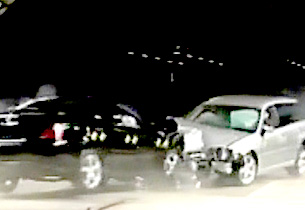
Cars built with others in mind
In an accident involving two cars, the smaller or lighter of the two usually sustains more damage during the collision. Subaru has taken a broad stance for developing cars to ensure an adequate level of safety towards the other car with an efficient, shock absorbing frame, while providing a solid cabin with which to protect its occupants, holding them firmly in place with fail-safe safety restraints.
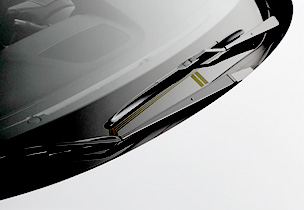
Preventing injury to pedestrian head area
The front wipers are designed so that the wiper shafts detach when subjected to shock. With this modular layout, injury to pedestrians from the wiper ends is minimised in the event that a pedestrian is thrown on top of the car’s bonnet.
One of the characteristics of the BOXER engine is its low structural profile. This allows space to be incorporated under the bonnet to absorb shocks if a pedestrian is thrown up onto the car, where they might have a high risk of sustaining head injury. Even the hinges and bonnet gas dampers are designed to reduce shocks, and the front bumper features a structure that absorbs collision energy as these can often hit the legs of pedestrians. These are just some of the ways that SUBARU has designed every facet of its cars to protect its passengers, as well as to make pedestrians and others safer.
Awards
Subaru safety assessments around the world














